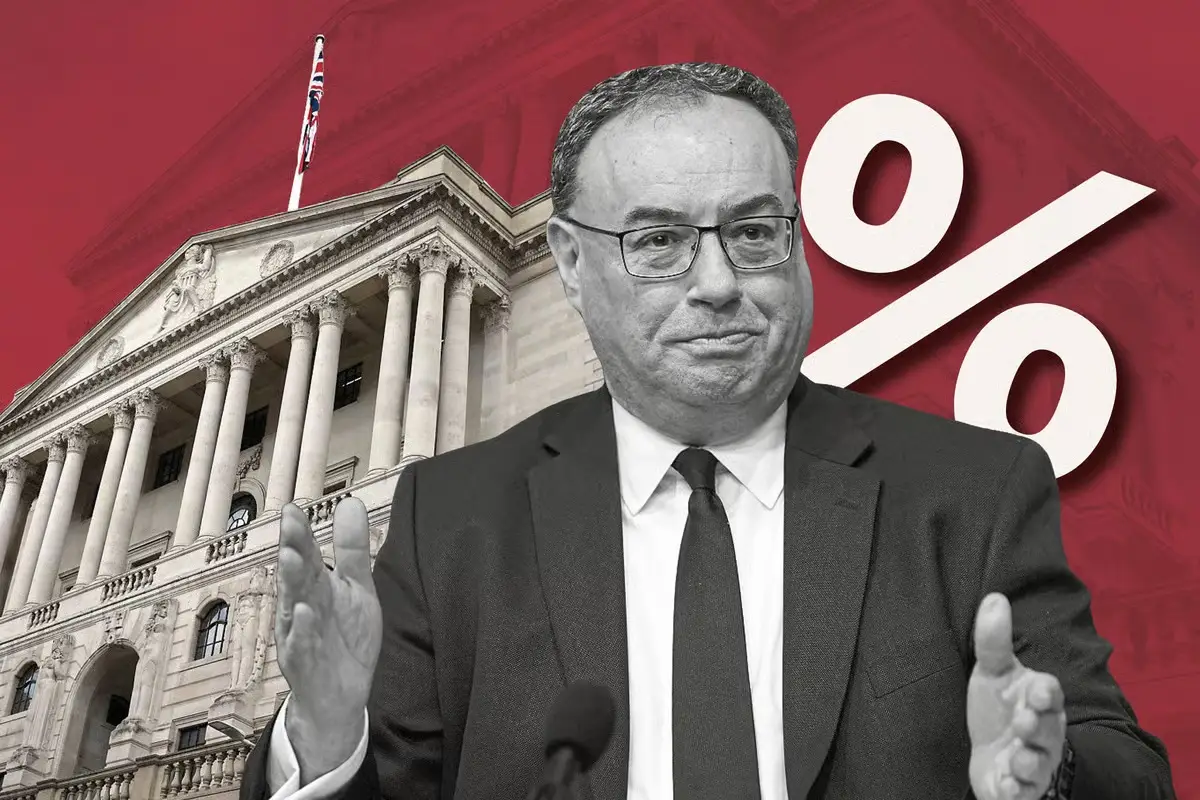House Republicans are orchestrating a strategic legislative move to retroactively combine GOP-led legislation that would ban the Federal Reserve from creating a central bank digital currency (CBDC) with a comprehensive bipartisan cryptocurrency market structure bill, following the separate passage of both measures in July’s landmark “Crypto Week.”
The House is scheduled to vote Tuesday afternoon on a procedural measure containing a little-noticed provision that would merge the Anti-CBDC Surveillance State Act with the CLARITY Act, which promises to overhaul how cryptocurrency tokens are regulated across the United States. The CBDC measure, championed by House Majority Whip Tom Emmer (R-Minn.), passed the lower chamber largely along party lines in July, while the sweeping market structure bill garnered significant bipartisan support from 78 Democrats.
Build the future you deserve. Get started with our top-tier Online courses: ACCA, HESI A2, ATI TEAS 7, HESI EXIT, NCLEX-RN, NCLEX-PN, and Financial Literacy. Let Serrari Ed guide your path to success. Enroll today.
This consolidation represents a significant shift from the original July strategy, when Republicans on the House Financial Services Committee and Agriculture committees initially objected to combining the measures on the floor. The legislative maneuvering reflects the complex dynamics within the Republican caucus regarding cryptocurrency policy priorities.
July’s “Crypto Week”: Legislative Drama and Hard-Liner Demands
The path to Tuesday’s vote has been marked by considerable intra-party tensions and procedural complications. During July’s designated “Crypto Week,” a group of hard-line conservatives initially blocked the procedural vote needed to advance the cryptocurrency legislation, creating a significant roadblock for House leadership.
Twelve House Republicans, including prominent figures like Anna Paulina Luna (R-Fla.) and Marjorie Taylor Greene (R-Ga.), derailed the initial crypto legislation package over concerns about potential “backdoors” that could enable CBDC creation. The group specifically worried that the market structure legislation contained insufficient protections against central bank digital currency implementation.
“There was a piece of legislation that would’ve been voted on today that would have allowed a backdoor to create a central bank digital currency,” Luna wrote on social media platform X. “I support crypto but I do not support CBDCs. I was part of a group that was able to block it.”
Representative Chip Roy (R-Texas) articulated the conservative concerns, stating: “We had some concerns with respect to the central bank digital currency, and that there not be a hard ban on that. We feel like we need to be dealing with all of this at once.”
Trump Administration Intervention and Deal-Making
The legislative standoff required direct intervention from President Trump, who personally met with 11 of the 12 dissenting lawmakers in the Oval Office to negotiate a compromise. Trump announced late Tuesday that he had reached a deal with most of the lawmakers who initially torpedoed the vote.
“I am in the Oval Office with 11 of the 12 Congressmen/women necessary to pass the GENIUS Act and, after a short discussion, they have all agreed to vote tomorrow morning in favor of the Rule,” Trump posted on his Truth Social platform.
The intervention demonstrated the Trump administration’s commitment to advancing pro-cryptocurrency legislation while managing the complex dynamics of conservative concerns about government-controlled digital currencies.
Current Legislative Framework: Three-Bill Structure
The comprehensive cryptocurrency package that emerged from July’s “Crypto Week” includes three distinct pieces of legislation, each addressing different aspects of digital asset regulation:
The GENIUS Act (Enacted)
The Guiding and Establishing National Innovation for U.S. Stablecoins Act became the first major cryptocurrency legislation ever passed by Congress when President Trump signed it into law on July 18, 2025. This landmark bill establishes the first federal regulatory framework for payment stablecoins, including requirements for one-to-one reserve backing and prohibitions on algorithmic stablecoins.
The CLARITY Act (House-Passed)
The Digital Asset Market Clarity Act aims to resolve the long-standing jurisdictional dispute between the Securities and Exchange Commission (SEC) and the Commodity Futures Trading Commission (CFTC) over digital asset regulation. The legislation would transfer significant regulatory authority over digital assets from the SEC to the CFTC, establishing clearer rules for cryptocurrency exchanges, brokers, and dealers.
The Anti-CBDC Surveillance State Act (House-Passed)
This Republican priority measure would explicitly prohibit the Federal Reserve from issuing a central bank digital currency without congressional approval. The bill reflects conservative concerns about government surveillance and financial control, with supporters arguing that CBDCs could enable unprecedented government monitoring of private financial transactions.
Strategic Calculations and Committee Leadership Concerns
When the bills initially passed the House in July, Republican leadership on the Financial Services and Agriculture committees expressed strong reservations about combining them on the floor. Committee leaders worried that merging the controversial CBDC ban with the broadly supported market structure bill could jeopardize bipartisan backing for the CLARITY Act.
The initial strategy prioritized sending a clean, bipartisan signal about the CLARITY Act’s viability in the Senate, where Democratic support would be crucial for passage. Committee leaders calculated that maintaining separate tracks for the legislation would maximize chances of securing meaningful cryptocurrency reform.
To appease conservative hard-liners while preserving the market structure bill’s bipartisan appeal, GOP leaders initially vowed to include CBDC ban language in Congress’s annual must-pass defense policy bill—the National Defense Authorization Act (NDAA).
Defense Authorization Strategy and Senate Dynamics
The alternative approach of incorporating CBDC restrictions into the NDAA reflected Republican leadership’s understanding of Senate dynamics and the need for bipartisan cooperation on major legislation. While the House-passed NDAA includes language banning CBDCs, few Democrats support the provision, making its survival in the Senate unlikely.
“Few Democrats support the provision, meaning it is likely to get stripped out of the bill by the Senate,” as bipartisan support remains essential for NDAA passage in the upper chamber. This reality has led House leadership to reconsider the strategic value of the defense bill approach.
Current Procedural Move and Leadership Justification
A spokesperson for House Financial Services Chair French Hill explained the rationale behind Tuesday’s procedural vote: “Passing both the CLARITY Act and Anti-CBDC bill were key priorities for members of the House.”
“By combining both measures and sending them to the Senate, the House continues to advance both priorities,” said spokesperson Brooke Nethercott. “We stand ready to work with [Banking Chair Tim Scott] and Senator [Cynthia] Lummis on a pathway forward to get both provisions signed into law.”
This statement reflects House Republicans’ calculation that a combined approach may actually strengthen their negotiating position with the Senate, particularly given the strong Republican showing in recent elections.
One decision can change your entire career. Take that step with our Online courses in ACCA, HESI A2, ATI TEAS 7, HESI EXIT, NCLEX-RN, NCLEX-PN, and Financial Literacy. Join Serrari Ed and start building your brighter future today.
Senate Legislative Landscape: Parallel Development
The procedural maneuver may ultimately prove symbolic, as the Senate appears committed to advancing its own comprehensive market structure legislation rather than adopting the House-passed measures. Senate leaders are positioning to advance the Responsible Financial Innovation Act, a separate and potentially more comprehensive approach to cryptocurrency regulation.
Senate Leadership and Bipartisan Dynamics
Senate Banking Committee Chairman Tim Scott (R-S.C.) and Senator Cynthia Lummis (R-Wyo.) have been working on market structure legislation that would need Democratic buy-in for passage. The Senate approach reflects different priorities and political dynamics than the House-passed measures.
In February 2025, Scott joined with Senators Bill Hagerty (R-Tenn.), Lummis, and Kirsten Gillibrand (D-N.Y.) to introduce the Senate version of the GENIUS Act, demonstrating the bipartisan nature of stablecoin regulation efforts in the upper chamber.
The Lummis-Gillibrand Framework: Comprehensive Alternative
The Lummis-Gillibrand Responsible Financial Innovation Act represents the most comprehensive bipartisan effort to date to provide regulatory clarity for digital assets. This legislation, introduced by Senators Cynthia Lummis (R-Wyo.) and Kirsten Gillibrand (D-N.Y.), addresses multiple aspects of cryptocurrency regulation including:
- Jurisdictional Clarity: Clear standards for determining which digital assets are commodities versus securities
- Stablecoin Framework: Comprehensive regulations for payment stablecoins
- Banking Integration: Provisions for traditional financial institutions to offer crypto services
- Tax Treatment: Clarifications on digital asset taxation
- Consumer Protection: Enhanced safeguards against fraud and market manipulation
CBDC Opposition: Conservative Concerns and Global Context
The inclusion of CBDC ban language reflects deep conservative concerns about government overreach and financial surveillance. The Anti-CBDC Surveillance State Act represents a unique position globally, as the United States would become the only major economy to explicitly ban central bank digital currencies.
Privacy and Surveillance Concerns
Conservative lawmakers argue that CBDCs could enable unprecedented government monitoring of private financial transactions. Representative Tom Emmer, the bill’s sponsor, has stated that the legislation will “codify President Trump’s effort to prevent the development of a central bank digital currency, or CBDC, and ensure the United States’ digital currency policy remains in the hands of the American people, and not the Administrative state.”
Global Competitive Implications
The CBDC ban position places the United States in stark contrast to other major economies actively developing digital currencies. According to the Atlantic Council’s CBDC tracker, over 135 countries are actively exploring or developing central bank digital currencies.
Critics argue that banning CBDCs could undermine Federal Reserve research and development efforts, potentially limiting U.S. competitiveness in digital payments innovation and cross-border payment systems.
Industry Response and Market Implications
The cryptocurrency industry has generally welcomed the legislative developments while expressing concerns about the complexity of the regulatory framework. Major exchanges and digital asset companies have lobbied extensively for regulatory clarity, viewing the House-passed measures as significant progress toward establishing a workable framework.
Market Structure Benefits
The CLARITY Act’s transfer of regulatory authority from the SEC to the CFTC addresses a major source of regulatory uncertainty that has plagued the industry for years. Companies like Coinbase have faced years of regulatory ambiguity, even resorting to federal lawsuits to force SEC responses to product approval requests.
Implementation Challenges
Industry experts note that the combined legislation creates complex implementation challenges, particularly regarding the coordination between CBDC restrictions and broader market structure reforms. The interaction between anti-CBDC provisions and stablecoin regulations requires careful technical coordination to avoid unintended regulatory gaps.
Political Dynamics and 2025 Considerations
The legislative maneuvering occurs against the backdrop of significant political shifts, including the Trump administration’s increasingly pro-cryptocurrency stance and changing dynamics in both chambers of Congress.
Trump Administration’s Evolving Position
President Trump’s personal involvement in resolving the July legislative standoff reflects his administration’s commitment to positioning the United States as a global leader in cryptocurrency innovation. This represents a significant evolution from previous Republican skepticism about digital assets.
Electoral Implications
The bipartisan nature of much cryptocurrency legislation reflects the growing political importance of digital asset policy, with lawmakers in both parties recognizing the sector’s economic significance and voter interest.
Technical Considerations and Implementation Timeline
The retroactive combination of the CBDC ban with the CLARITY Act creates complex technical and procedural considerations for implementation, should the combined measure ultimately become law.
Regulatory Coordination Requirements
Merging anti-CBDC provisions with market structure reforms requires careful coordination between multiple federal agencies, including the Federal Reserve, CFTC, SEC, and Treasury Department. Each agency would need to develop implementing regulations and coordinate enforcement approaches.
Industry Compliance Implications
Digital asset companies would need to navigate the combined requirements of market structure reforms and CBDC restrictions, potentially creating new compliance obligations and operational considerations.
Looking Ahead: Senate Considerations and Future Prospects
The House’s strategic combination of the measures sets up potential negotiations with the Senate, though the upper chamber’s preference for its own legislative approach may limit the immediate impact of Tuesday’s vote.
Bipartisan Cooperation Requirements
Successful passage of comprehensive cryptocurrency legislation in the Senate requires sustained bipartisan cooperation, particularly given the 60-vote threshold for most major legislation. The inclusion of controversial CBDC ban language may complicate efforts to maintain Democratic support.
Timeline and Political Realities
With multiple legislative priorities competing for attention, the timeline for comprehensive cryptocurrency legislation remains uncertain. The political calendar and other competing priorities may influence the pace and scope of final legislative action.
Conclusion: Symbolic Politics or Strategic Positioning?
Tuesday’s House vote represents either a symbolic political gesture or a strategic positioning move ahead of potential Senate negotiations. The retroactive combination of anti-CBDC and market structure legislation reflects the complex political dynamics surrounding cryptocurrency regulation and the ongoing tension between innovation promotion and concerns about government overreach.
The ultimate success of this legislative approach will depend on the Senate’s willingness to engage with the House-passed framework rather than pursuing entirely separate legislation. With both chambers now controlled by Republicans but requiring bipartisan cooperation for major legislative achievements, the path forward remains complex and politically challenging.
As the cryptocurrency industry continues to evolve and mature, the regulatory framework established by this legislative process will significantly influence the United States’ position in the global digital asset economy. Whether Tuesday’s vote proves symbolic or substantive may depend on the broader political dynamics and priorities that emerge in the coming months of the legislative session.
The intersection of technological innovation, political ideology, and regulatory pragmatism embodied in this legislation represents a defining moment for U.S. cryptocurrency policy, with implications extending far beyond the immediate legislative mechanics to encompass America’s broader approach to financial innovation and digital asset leadership in the 21st century.
Ready to take your career to the next level? Join our Online courses: ACCA, HESI A2, ATI TEAS 7 , HESI EXIT , NCLEX – RN and NCLEX – PN, Financial Literacy!🌟 Dive into a world of opportunities and empower yourself for success. Explore more at Serrari Ed and start your exciting journey today! ✨
Track GDP, Inflation and Central Bank rates for top African markets with Serrari’s comparator tool.
See today’s Treasury bonds and Money market funds movement across financial service providers in Kenya, using Serrari’s comparator tools.
Photo source: Google
By: Montel Kamau
Serrari Financial Analyst
16th September, 2025
Article, Financial and News Disclaimer
The Value of a Financial Advisor
While this article offers valuable insights, it is essential to recognize that personal finance can be highly complex and unique to each individual. A financial advisor provides professional expertise and personalized guidance to help you make well-informed decisions tailored to your specific circumstances and goals.
Beyond offering knowledge, a financial advisor serves as a trusted partner to help you stay disciplined, avoid common pitfalls, and remain focused on your long-term objectives. Their perspective and experience can complement your own efforts, enhancing your financial well-being and ensuring a more confident approach to managing your finances.
Disclaimer: This article is for informational purposes only and does not constitute financial advice. Readers are encouraged to consult a licensed financial advisor to obtain guidance specific to their financial situation.
Article and News Disclaimer
The information provided on www.serrarigroup.com is for general informational purposes only. While we strive to keep the information up to date and accurate, we make no representations or warranties of any kind, express or implied, about the completeness, accuracy, reliability, suitability, or availability with respect to the website or the information, products, services, or related graphics contained on the website for any purpose. Any reliance you place on such information is therefore strictly at your own risk.
www.serrarigroup.com is not responsible for any errors or omissions, or for the results obtained from the use of this information. All information on the website is provided on an as-is basis, with no guarantee of completeness, accuracy, timeliness, or of the results obtained from the use of this information, and without warranty of any kind, express or implied, including but not limited to warranties of performance, merchantability, and fitness for a particular purpose.
In no event will www.serrarigroup.com be liable to you or anyone else for any decision made or action taken in reliance on the information provided on the website or for any consequential, special, or similar damages, even if advised of the possibility of such damages.
The articles, news, and information presented on www.serrarigroup.com reflect the opinions of the respective authors and contributors and do not necessarily represent the views of the website or its management. Any views or opinions expressed are solely those of the individual authors and do not represent the website's views or opinions as a whole.
The content on www.serrarigroup.com may include links to external websites, which are provided for convenience and informational purposes only. We have no control over the nature, content, and availability of those sites. The inclusion of any links does not necessarily imply a recommendation or endorsement of the views expressed within them.
Every effort is made to keep the website up and running smoothly. However, www.serrarigroup.com takes no responsibility for, and will not be liable for, the website being temporarily unavailable due to technical issues beyond our control.
Please note that laws, regulations, and information can change rapidly, and we advise you to conduct further research and seek professional advice when necessary.
By using www.serrarigroup.com, you agree to this disclaimer and its terms. If you do not agree with this disclaimer, please do not use the website.
www.serrarigroup.com, reserves the right to update, modify, or remove any part of this disclaimer without prior notice. It is your responsibility to review this disclaimer periodically for changes.
Serrari Group 2025
















